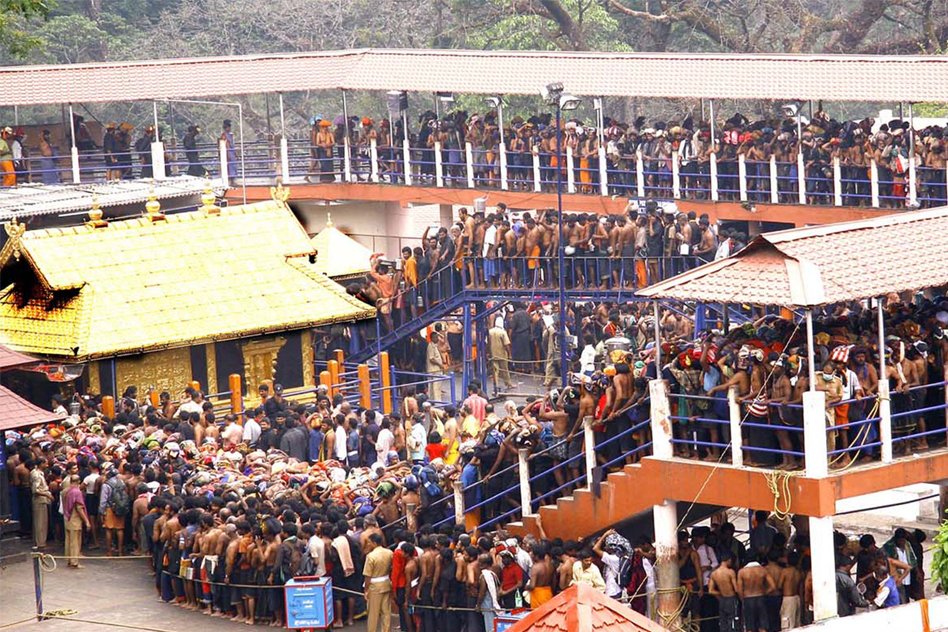Image Courtesy: templedairy
Sabarimala is a Hindu pilgrimage centre located at the Periyar Tiger Reserve in the Western Ghat mountain ranges of Kerala and is one of the largest annual pilgrimages in the world, with an estimated over 100 million devotees visiting every year.
Sabarimala is visited by Hindu pilgrimage, predominantly for men of all ages and can be identified easily, as they wear black or blue dress. Females, between the ages of approximately 10 and 50, are not allowed to enter the temple, since the story attributed to Ayyappa prohibits the entry of the women in the menstrual age group.
This is because Ayyappan is a Bramhachari (celibate). Some cite the reason of hygiene as the tradition of Pilgrim dates back when there were less resource with women to keep hygiene during menstrual period.
Whatever is the reason behind the banning women from entering temple, Supreme Court stated it to be discriminatory and questioned the age-old practice.
“The temple cannot prohibit entry (women), except on the basis of religion. Unless you have a constitutional right, you cannot prohibit entry,” a judge said.
Young Lawyers Association has been fighting for women’s right here since last 10 years and the Supreme Court made these observations when hearing the case filed by them against the powerful Travancore Devasom Board. How could anyone be assured that no woman had entered the temple in its 1,500-year-old history the Court asked further?
In a similar case Supreme Court delivering its verdict on a petition filed by priests of Madurai’s Sri Meenakshi Amman Temple, said that “constitutional legitimacy must supersede all religious beliefs or practices”. And made it possible for non-Brahmins to become the priest.
The Logical Indian community welcomes the decision of the Supreme Court. It is important that with time, a society progresses and do away with rituals that don’t suit the time we are leaving in.











